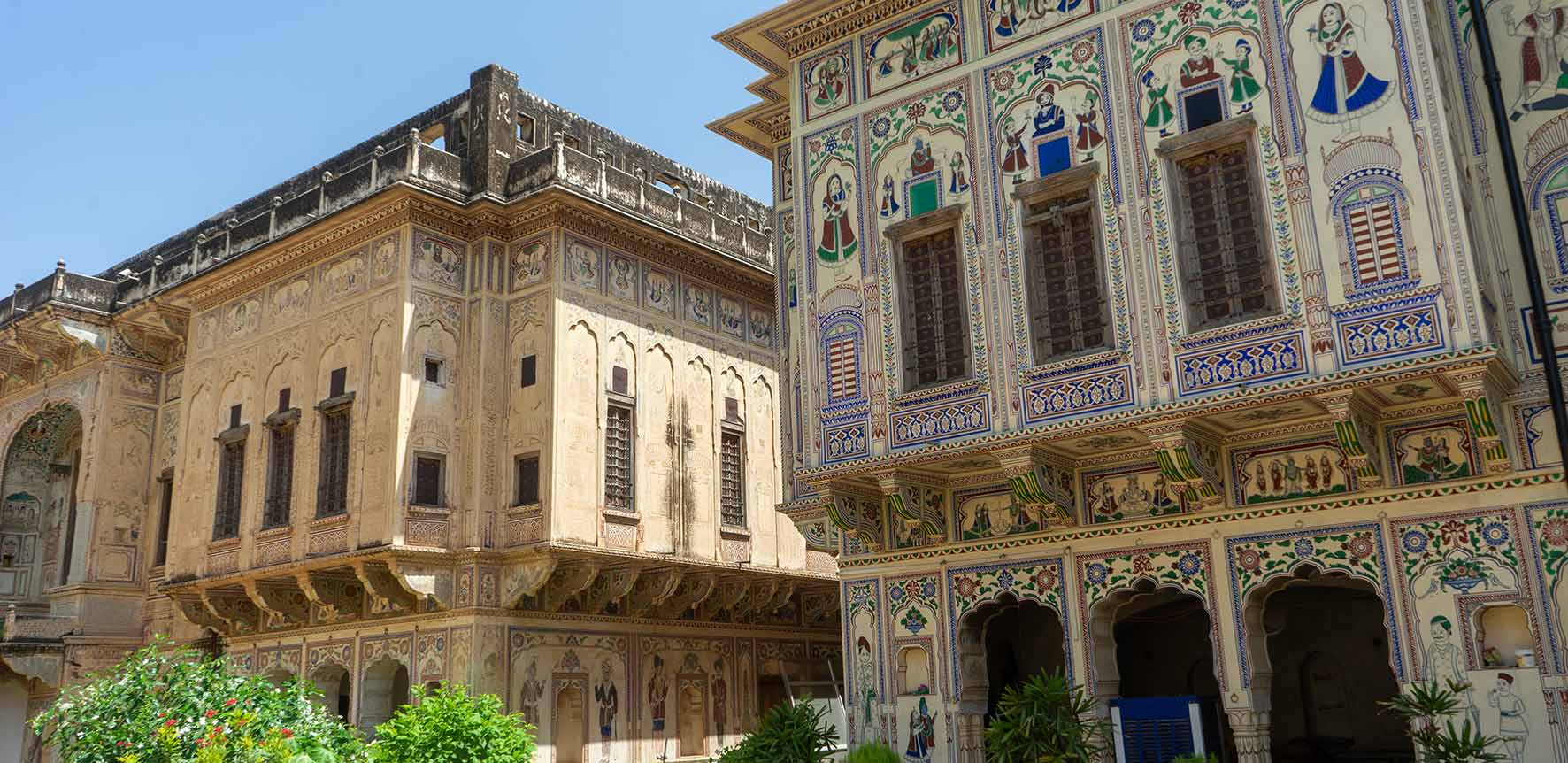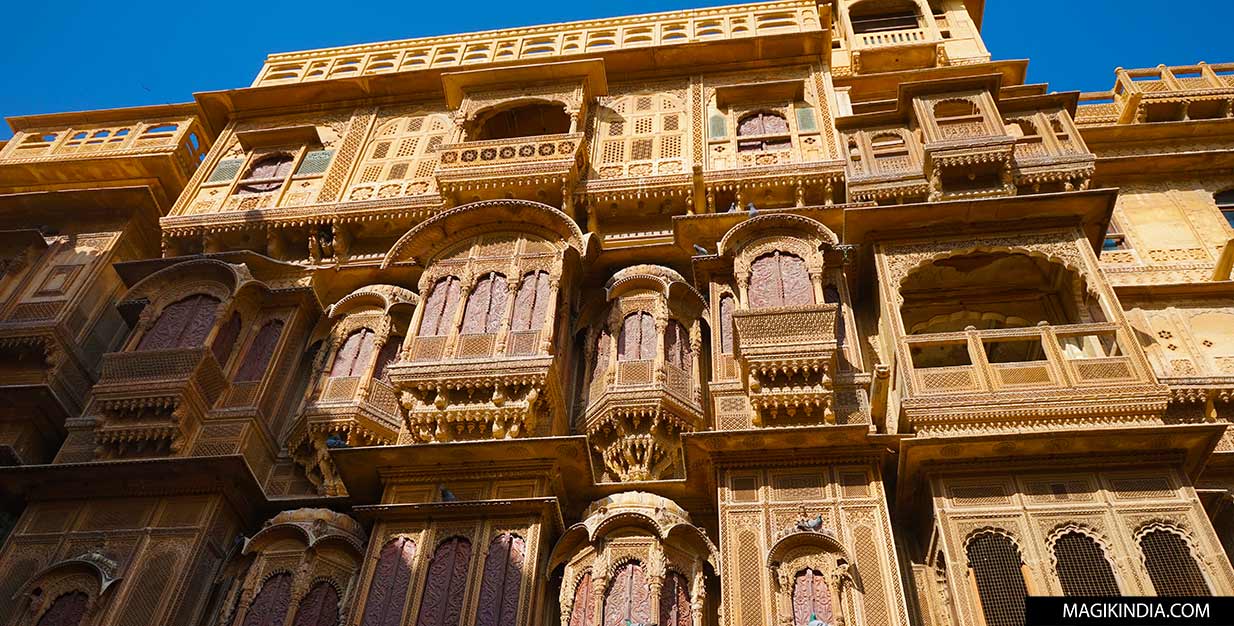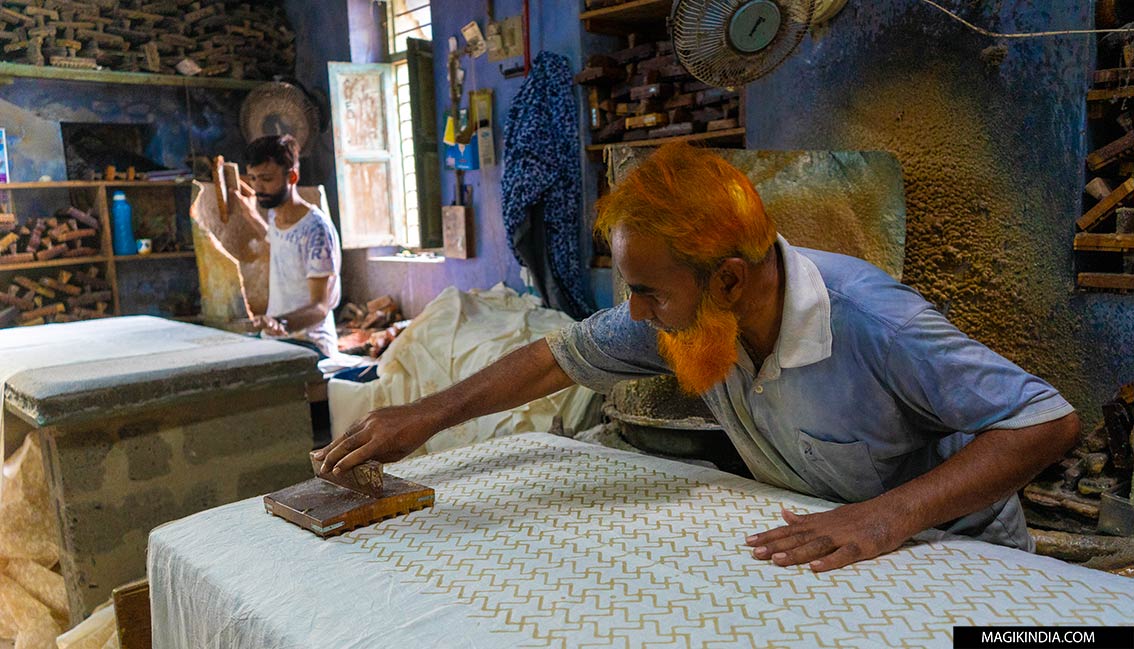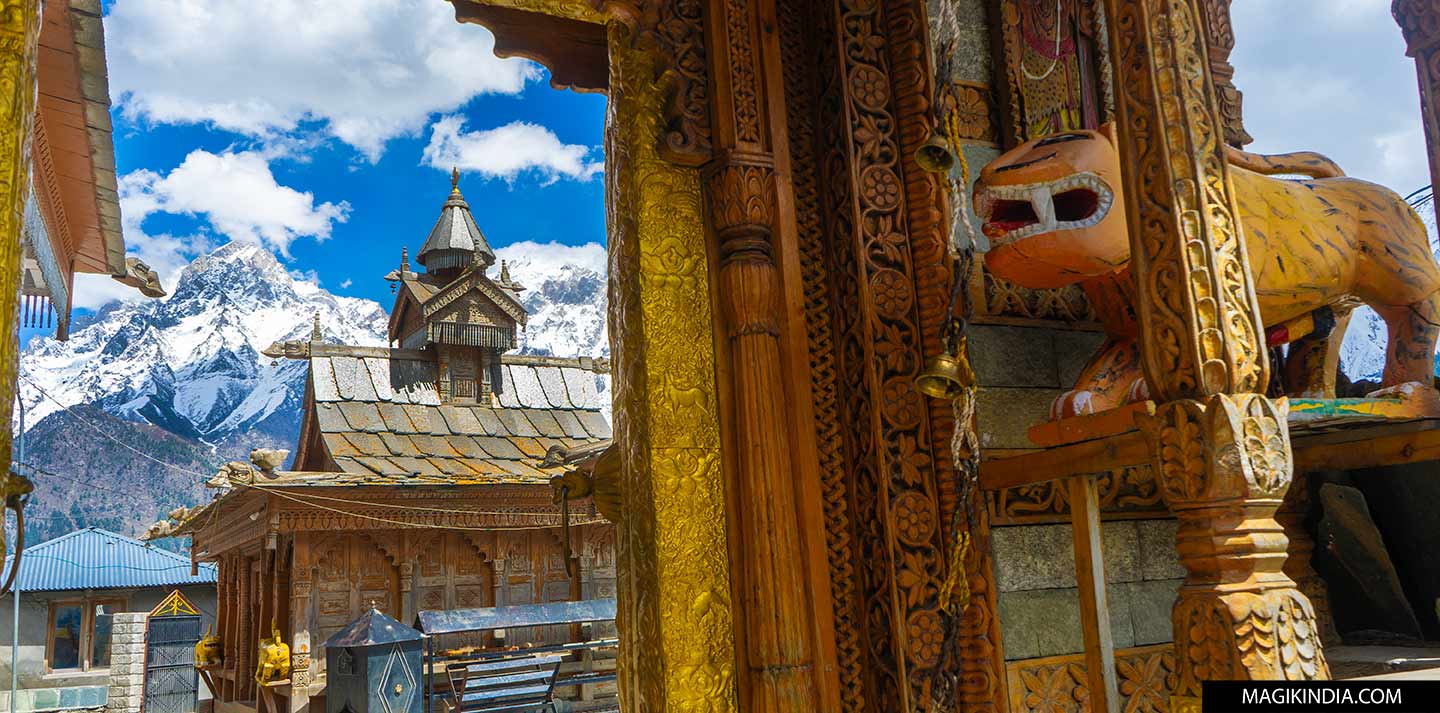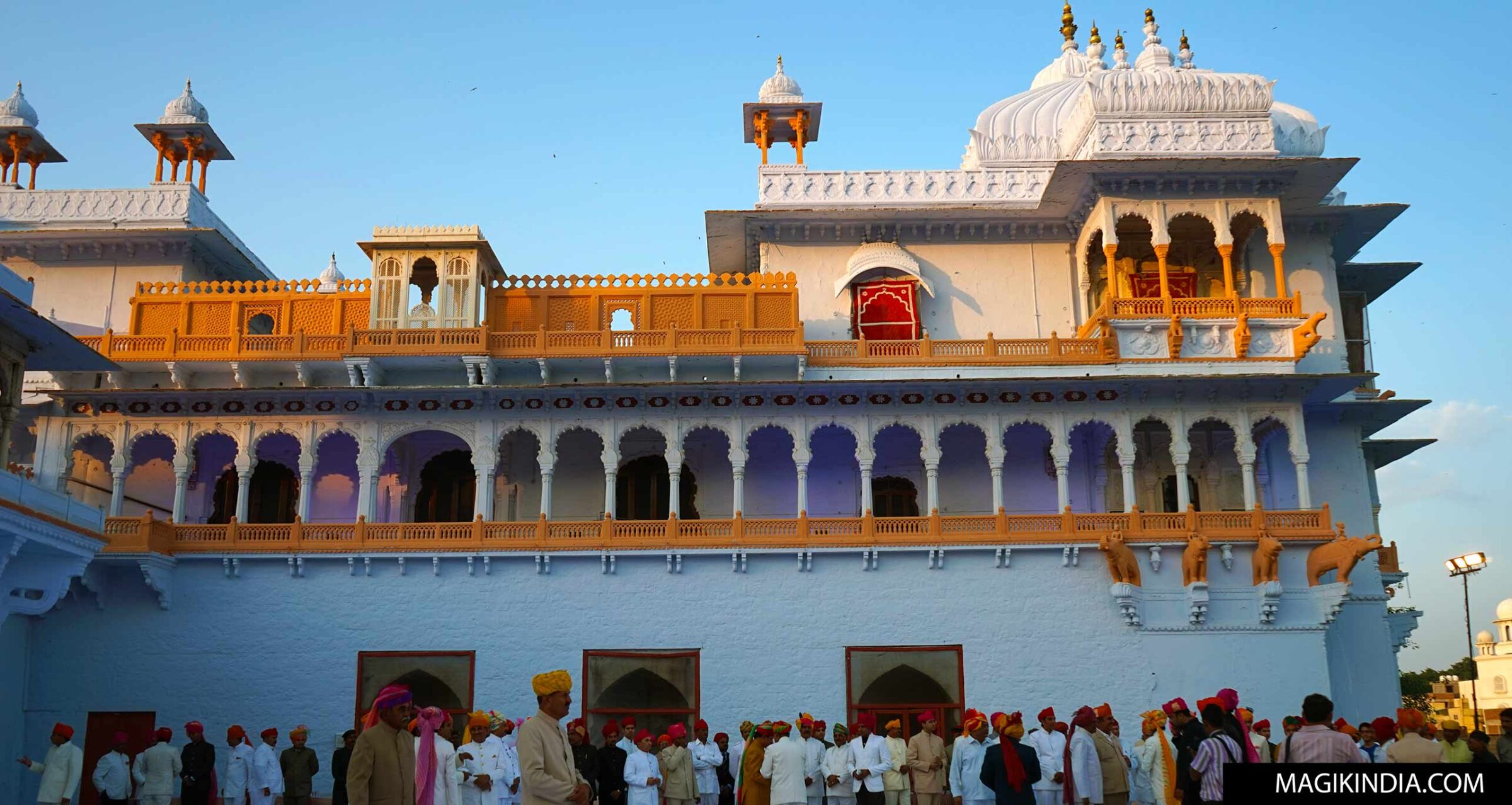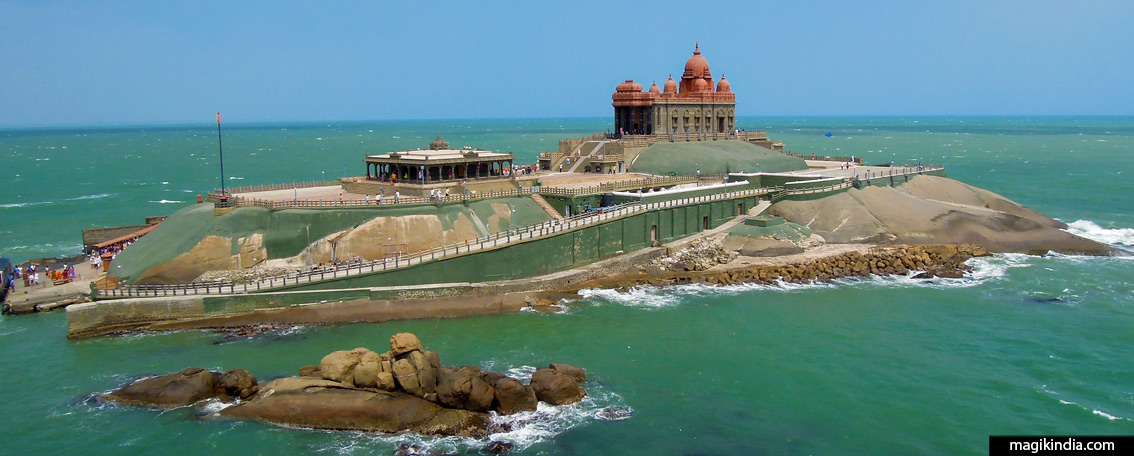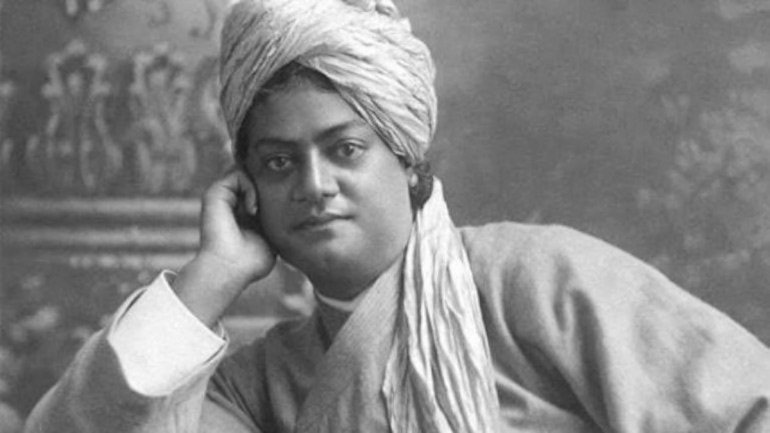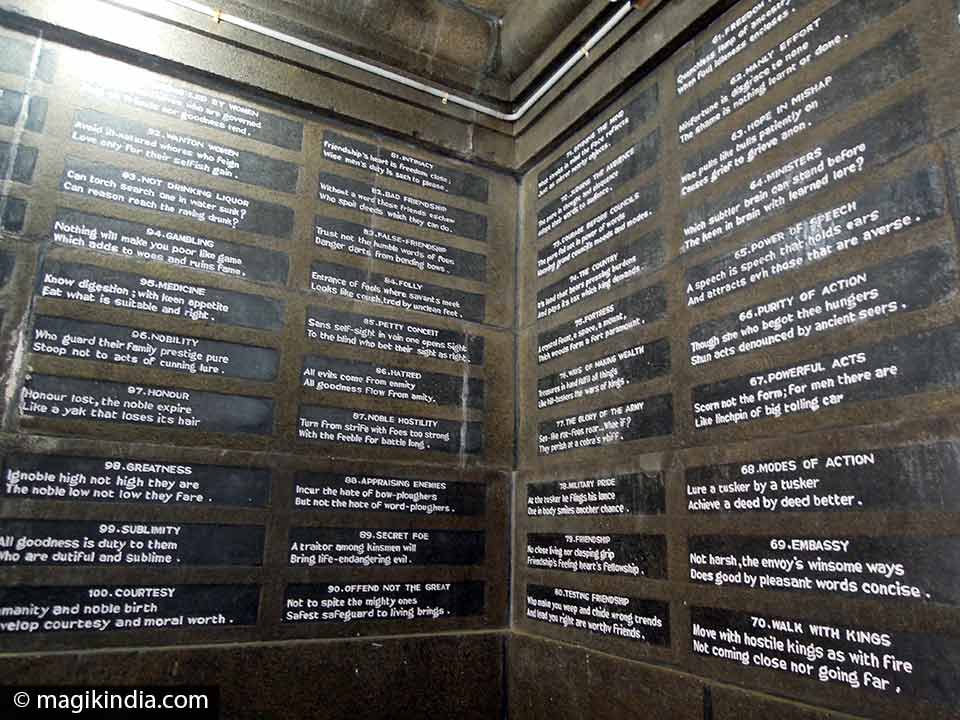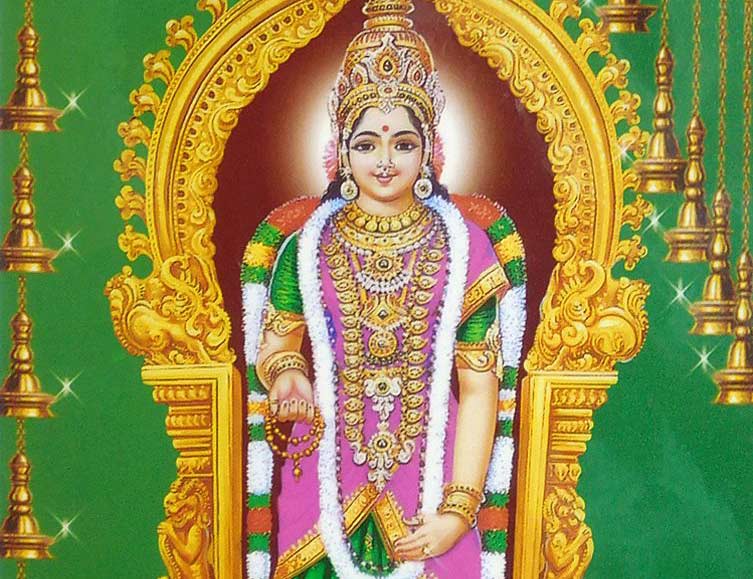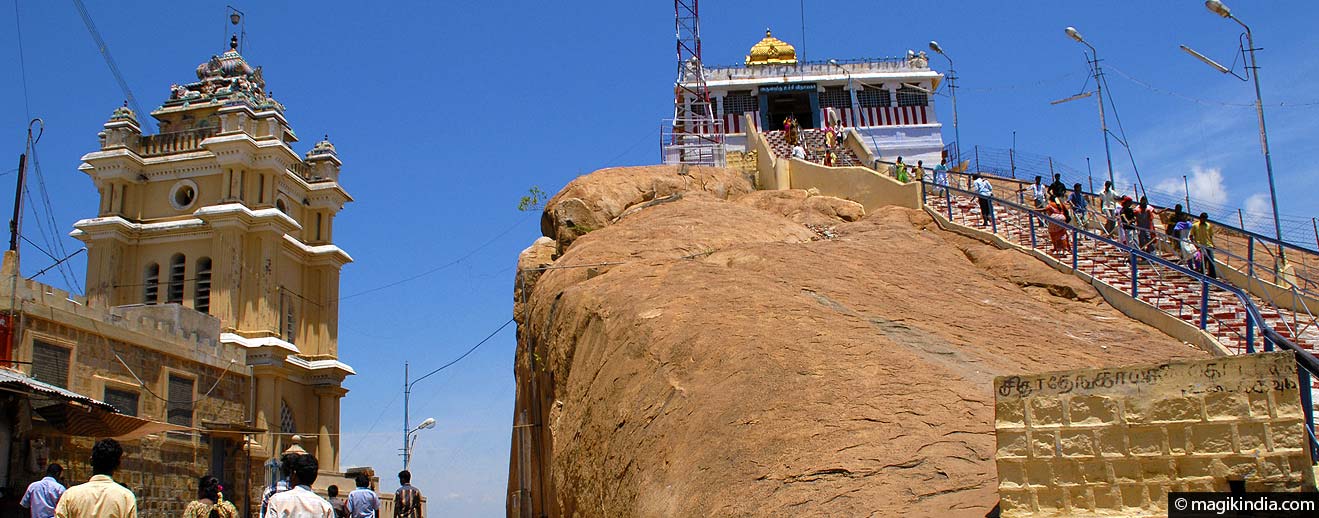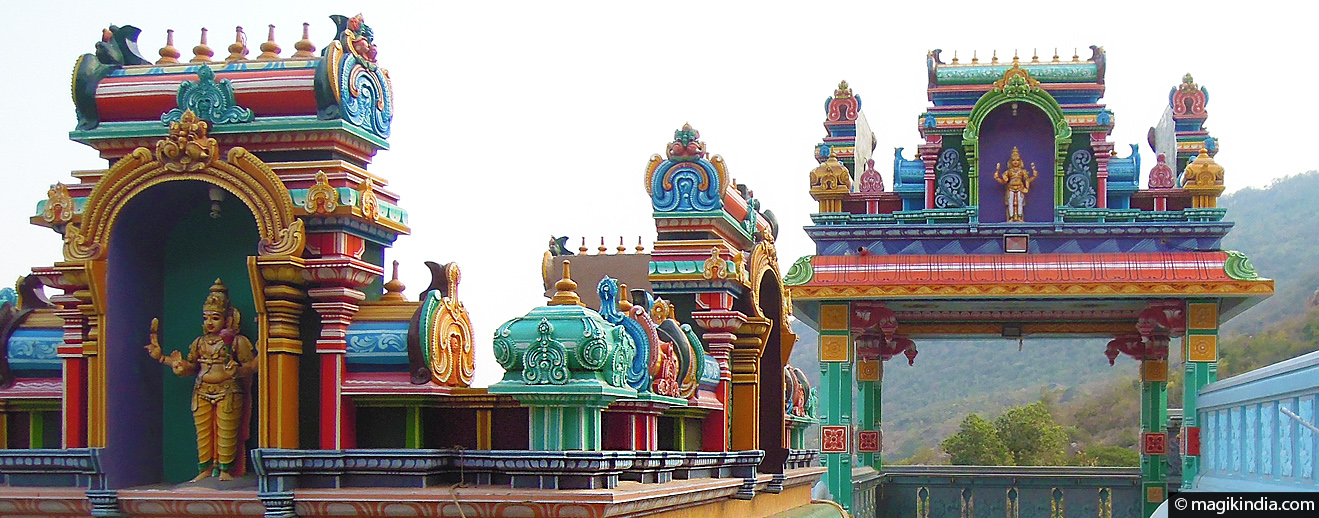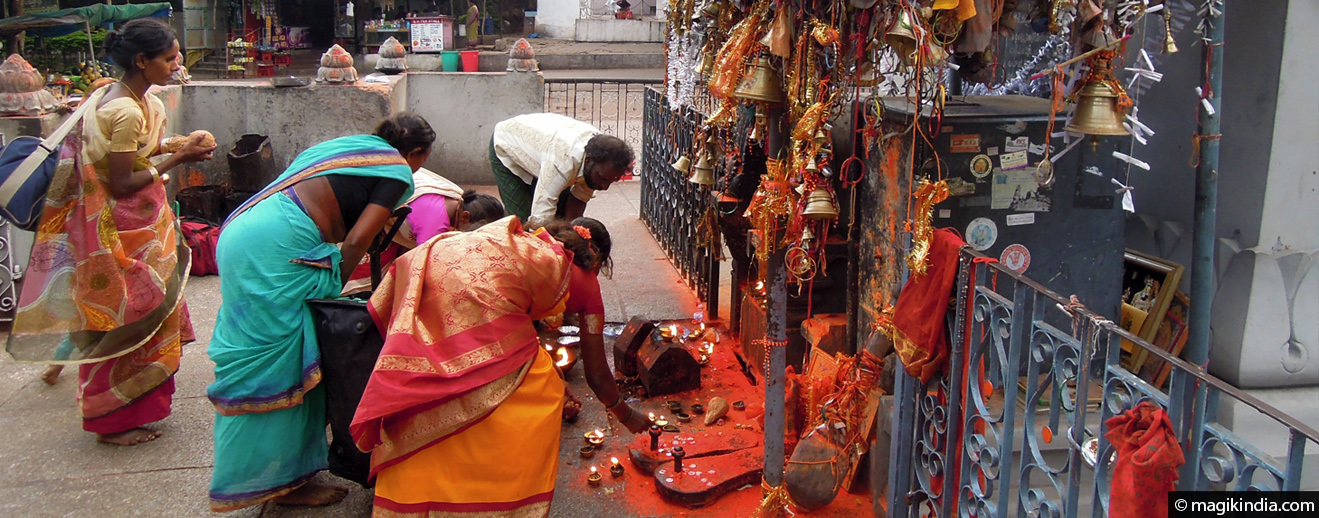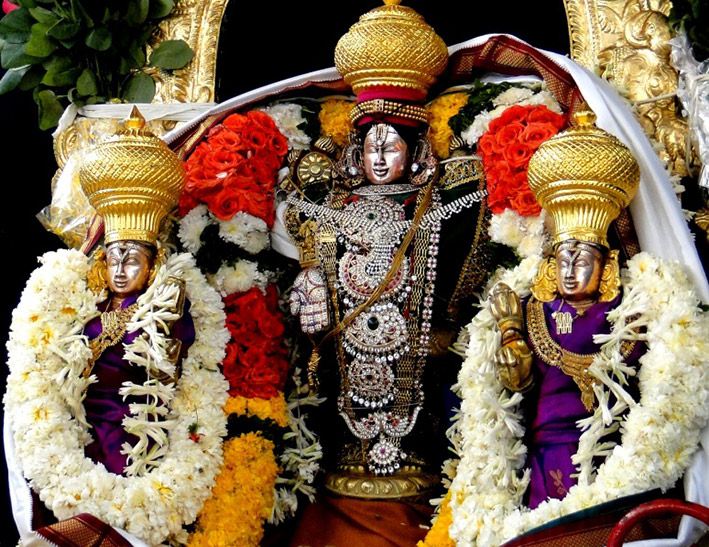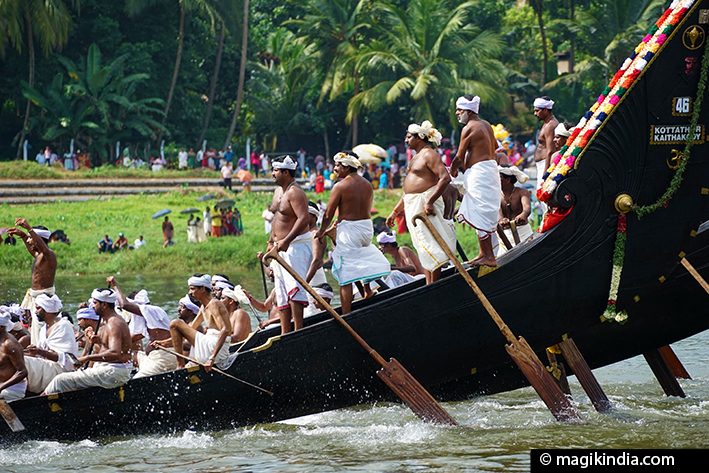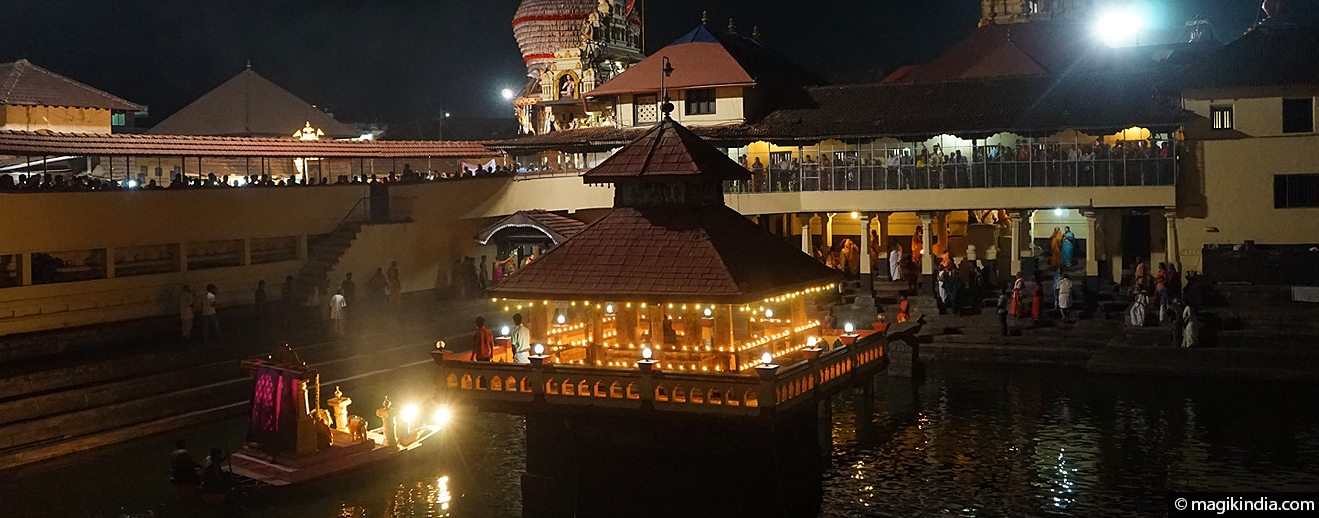
Namaskaram !
Welcome, Padharo ! I'm Mathini, a French woman who has been living in Rajasthan for 10 years. Despite being imbued with Indian culture from a young age it wasn't until 2014 that my Indian adventure really began. I left everything behind in France and set off on a 6-year journey through the land of Gandhi. These adventures are gathered in this blog which aspires, in an intentionally positive spirit, to bear witness to India's remarkably diverse and multifaceted cultural heritage. If this website sparks a desire to pack your bags and set off for an Indian adventure, it will have achieved its purpose. Subh Yatra on Magik India and beautiful explorations in the sacred land of Bharat...
Kanyakumari, formerly called Cape Comorin, it the southern tip of India where the Arabian Sea meets the Indian Ocean. The place is named after the goddess Devi Kanya Kumari, a form of Parvati. The town is mainly a holy place for Hindus because of its Bhagavathy Kumari temple and its connections with Swami Vivekananda, Mahatma Gandhi and the sage Agastyar.
Vivekananda Rock Memorial***
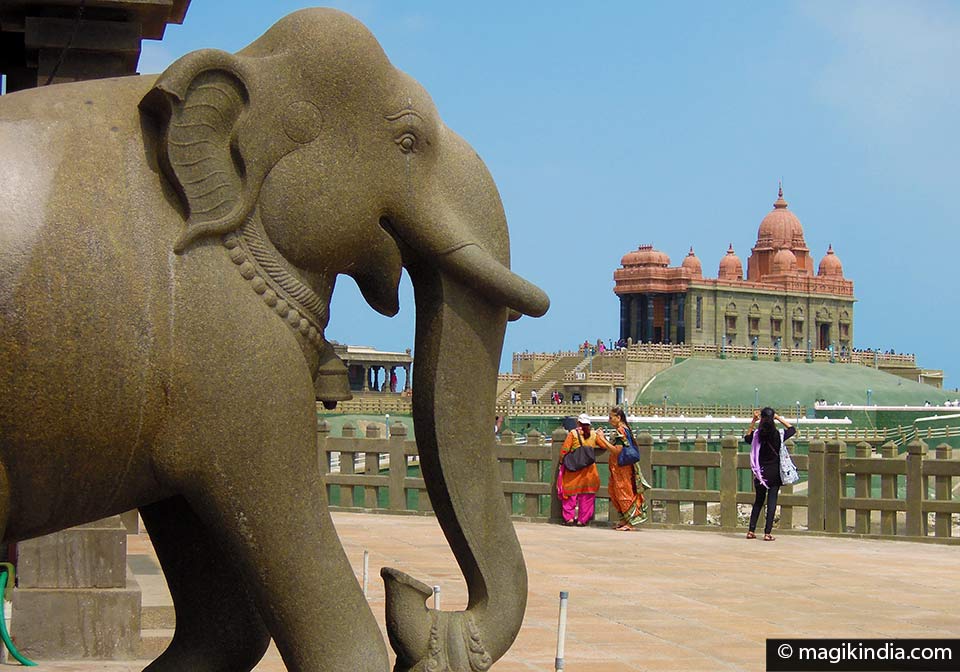
The Vivekananda memorial stands on a rock about 500m off the coast.
It can be reached by ferry across a rather rough stretch of sea. It was built in 1970 in honour of Swami Vivekananda’s visit to Shripada Parai in 1892.
The story goes that he swam to the rock and meditated there. It is said that is here that he attained enlightenment and became a great philosophical reformer.
rock memorial vivekananda website
“You have to grow from within. No one can teach you, no one can make you spiritual. There is no teacher but your own soul” Swami Vivekananda
Thiruvalluvar Statue **

Next to the Vivekananda memorial, on a second rock, is a huge stone statue of the Tamul poet Thiruvalluvar, author of the Thirukkural, a work in rhyming couplets setting out various teachings on how to live a harmonious life. It can be reached by ferry from the Vivekananda memorial.
The statue was inaugurated on 1 January 2000. Twenty-nine metres tall, it stands on a 12m plinth on which the Thirukkural‘s 38 chapters on virtue are carved. The combined height of plinth and statue is 133ft (40.5m), representing the 133 chapters of the Thirukkural.
Bhagavathy Kumari Temple**
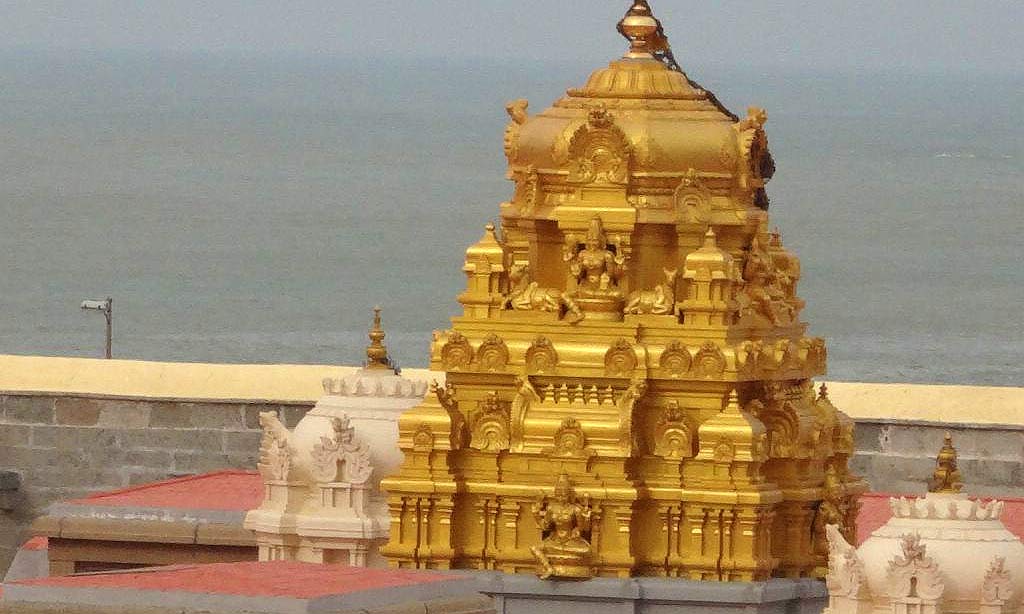 Bhagavathy Devi, also known as Devi Kanya Kumari, is the goddess Durga in the form of an adolescent girl.
Bhagavathy Devi, also known as Devi Kanya Kumari, is the goddess Durga in the form of an adolescent girl.
She is the goddess of sannyas (renunciation) and penitence. The Goddess is believed to be the one who removes the rigidity of our mind,
This highly revered temple is also one of the 51 Shakti Peethas; it is said that the spine of the goddess Sati’s body fell here.
Gandhi Memorial*
Near the Kumari Amman temple stands a memorial to Mahatma Gandhi, who visited Kanyakumari in 1925 and 1937.
Some of Gandhi’s ashes were kept here before being scattered at sea.
The memorial is built in the Odisha architectural style and designed so that each year on 2 October, Mahatma’s birthday, the sun’s rays fall exactly on the spot where the funerary urn stood.
The height of the building’s centre is 79 feet, representing the age at which Mahatma died.
Thanumalayan / Suchindrum Temple (13km)***

The Thanumalayan is dedicated to the three gods of the Trimurti or Hindu trinity.
Thanu is a reference to Shiva, Mal to Vishnu and Aya to Brahma. The temple was built in the 17th century and its 40m gopuram is remarkable for the intricacy of its carvings of Hindu deities. This place is also called Suchindrum in sacred scriptures.
Legend has it that Indra, king of the Devas, came to pray at the temple to be released from a curse. Suchi comes from a Sanskrit word for “purify”. It is also said that Indra visited the temple at midnight every night to perform an Ardhajama Puja (night ritual).
Thirukokarnam temple, 5km from Pudukkottai, is dedicated to the Hindu goddess Praghathambal or Araikasu Amman and to Gokaneshwarar, one of the forms of the god Shiva.The temple looks unimpressive from outside, but once inside you find a fascinating labyrinth of subterranean shrines.
Tiruchirappalli, better known as Trichy is instantly recognisable from the temple perched on high rock outcrop near the centre and it is one of the oldest cities in Tamil Nadu. From this distant past, this bubbling city preserves a great spiritual tradition represented by its innumerable temples of which the famous “Sri Rangam”, the largest of all India, is part.
A stop at Tiruvannamalai is a mystical moment. The town takes its name from Annamalaiyar temple around which it grew, and Shiva worship is a key activity for the town. For Hindus, Arunachala Hill overlooking the town represents Shiva himself and is an object of special devotion. The town is full of hermitages and ashrams that bear witness to its powerful spiritual charge.
Legends about the Arunachala Hill
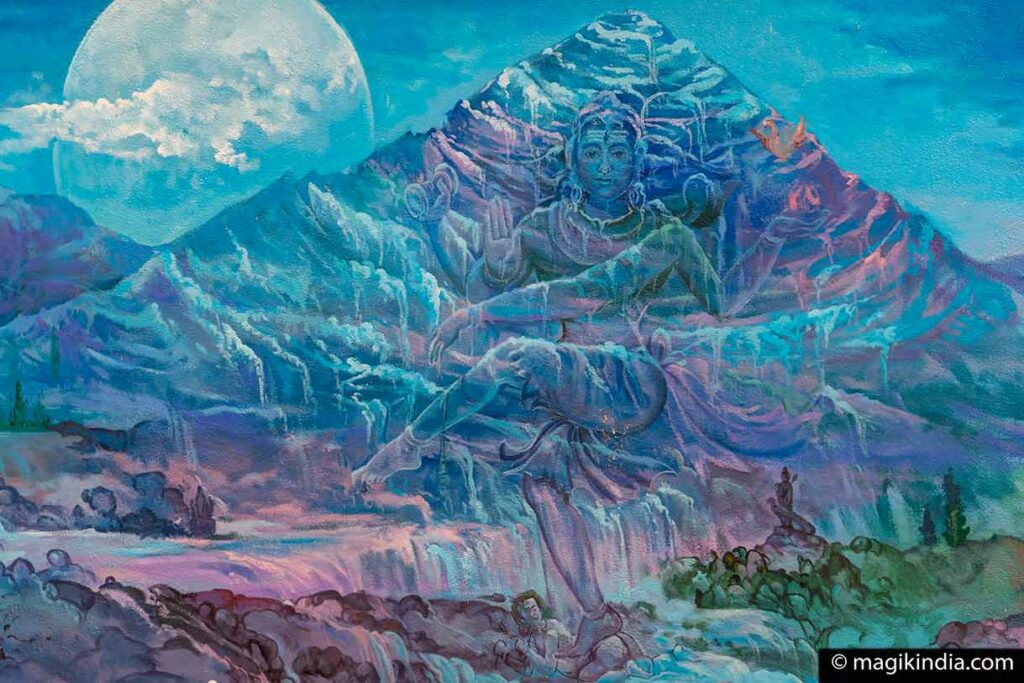
A legend tells us that one day Shiva’s consort Parvati put her hands over his eyes, for fun. It lasted a mere fraction of a second in godly terms, but it meant that the earth was shrouded in darkness for years. Parvati had to perform many austerities to regain Shiva’s confidence. She started her austerities in the Himalayas and finished them in the south, on Arunachala Hill. And there Shiva appeared in a luminous column, and light was restored to the world. Shiva merged with Parvati to form Ardhanarishvara, a being who is half male, half female, and who has lived in the hill ever since.

The Siva Mahapurana, an ancient mythological and religious scripture, tells of a quarrel between Brahma the creator and Vishnu the preserver. Each claimed to be the Supreme Lord and a terrible battle ensued, plunging the universe in confusion and causing great distress to living creatures. Shiva was moved by compassion and manifested in a blazing pillar of light, challenging Brahma and Vishnu to find the base and top of the pillar.
Brahma took the form of a sign and vanished into the sky, hoping to see the top of the pillar. Vishnu took the form of a boar and dug down into the earth to find its base. Neither could find what they were looking for. They came back exhausted and disoriented.
At that moment, the central part of the pillar opened up and Shiva was revealed in all his glory. Brahma and Vishnu realised they were wrong and acknowledged Shiva as the Supreme Being. Shiva changed the blinding light of the column into a sacred mountain called Arunachala

Karthigai Deepam
Every year on the tenth day of the Karthikai Deepam festival a sacred fire is lit in Arunachaleswarar temple.
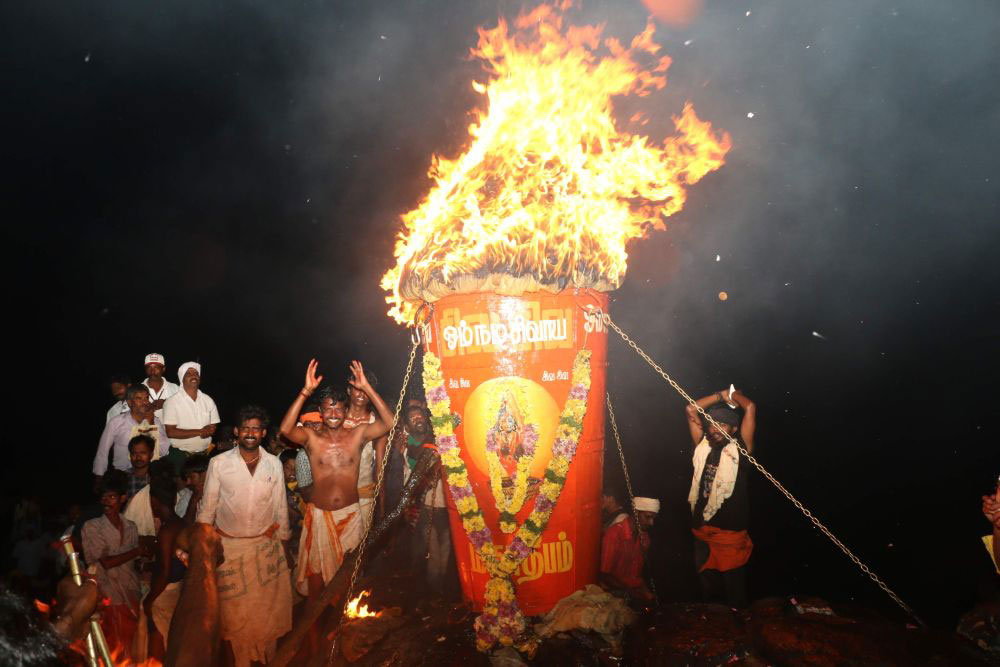
Devotees fill pots with embers from the fire and carry them to the top of Arunachala Hill. There, at sunset, an enormous barrel containing hundreds of litres of ghee (clarified butter) is set alight. The fire on Arunachala can be seen for miles around as a reminder of when Shiva appeared as a column of light.
The day before each full moon, pilgrims perform Giri Valam, a circumambulation round the foot of the hill.
[ Kartikai Deepam 2018 ]
And now, let’s visit Tiruvannamalai!
Annamalaiyar Temple
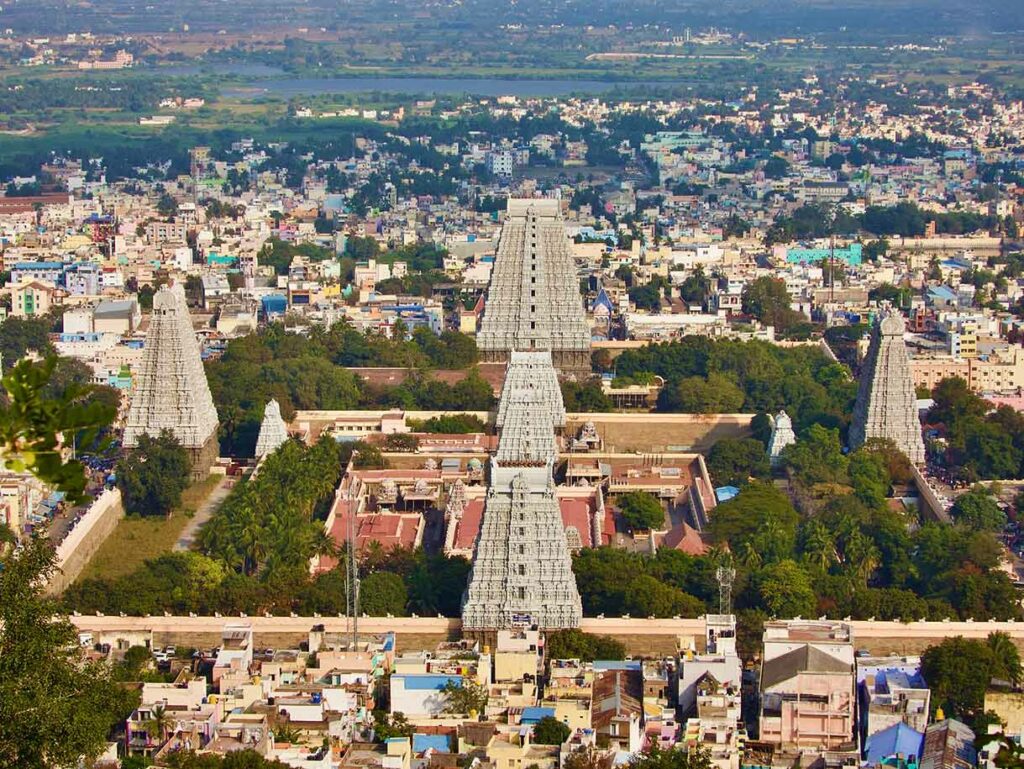
Arunachaleswarar (or Annamalaiyar) temple, at the foot of Arunachala Hill, is dedicated to Shiva. The temple is one of the largest in India, covering six hectares. The initial structure dates from the 9th-century Chola dynasty. Later extensions are attributed to the Vijayanagar Sangama dynasty of the 14th and 15th centuries and the Saluva and Tuluva dynasties of the 15th and 16th centuries.
It is an important place of pilgrimage because it is a Pancha Bhoota Stala, i.e. a place associated with one of the five elements of nature.
As Shiva is believed to have appeared in this place as a column of light, he is represented here by a fire lingam or Agni Lingam.
Annamalaiyar symbolises duty, virtue, self-sacrifice and liberation by means of ascetic renunciation. Another sanctum houses Parvati, Shiva’s consort, in the form of Unnamulai Amman.
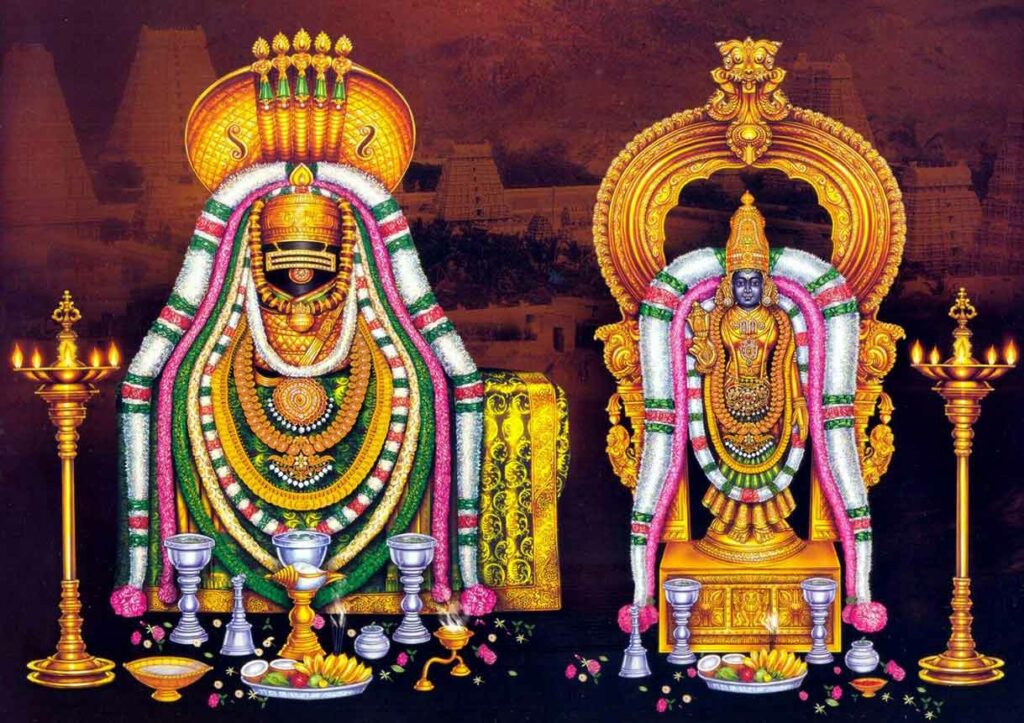
This Shiva temple is also considered an Aathara Stala, i.e. a place considered to personify one of the Tantric chakras. This one is associated with the Manipooraga chakra which symbolises spiritual ignorance.
Arunachala – Annamalai hill

Arunachala Hill, overlooking the town, is a very holy place for Hindus. It is one of the five principal Shaivite (shiva cult) holy places in South India.
Hindus regard it as Adi-Lingam, the “first lingam”, the first manifestation of Shiva.
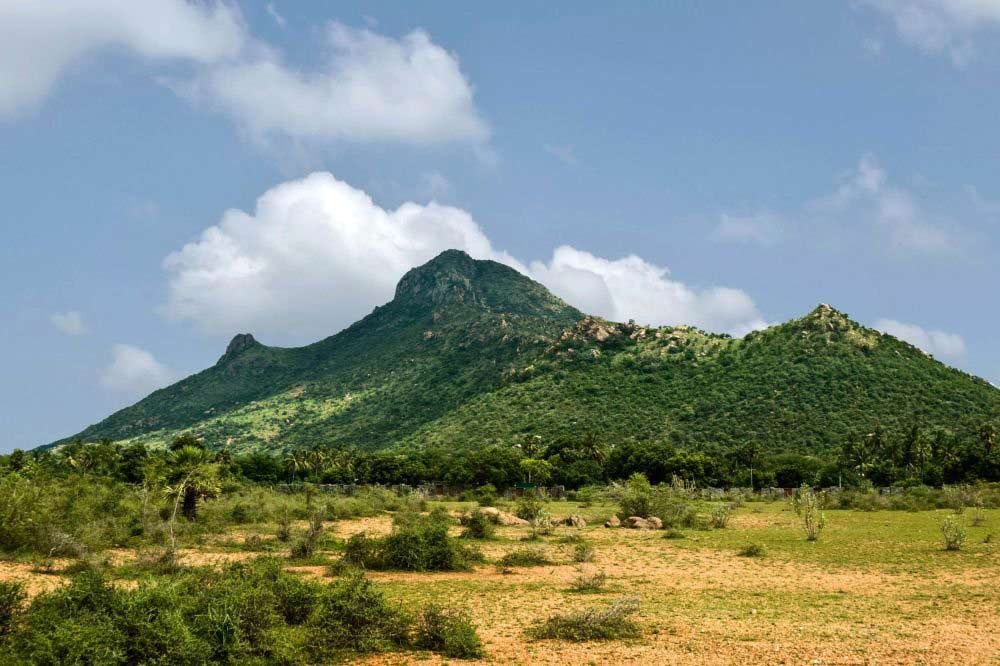
The simple fact or seeing or even thinking of Arunachala is said to be enough to neutralise all karma. It is also said that this hill is the centre of the world and that Lord Shiva lives there with his consort Parvati.
As Arunachala is regarded as Lord Shiva in person, the circumambulation round it, called Giri Pradakshina in Sanskrit and Giri Valam in Tamil, is considered to be of great spiritual benefit.
Ramana Maharshi Ashram

Another important place in Tiruvannamalai is the Ramana Maharshi Ashram located at the foot of Arunachala hill, west of Tiruvannamalai. It is said that Ramana Maharshi and Arunachala hill are inseparable.
Ramana Maharshi (1879 – 1950) is considered a holy man by the Hindus but also by many faithful from around the world who continue to meditate on his samadhi (tomb). His teaching is centered on the notion of ‘Self’ and the question ‘Who am I?’ (Atma Vichara).
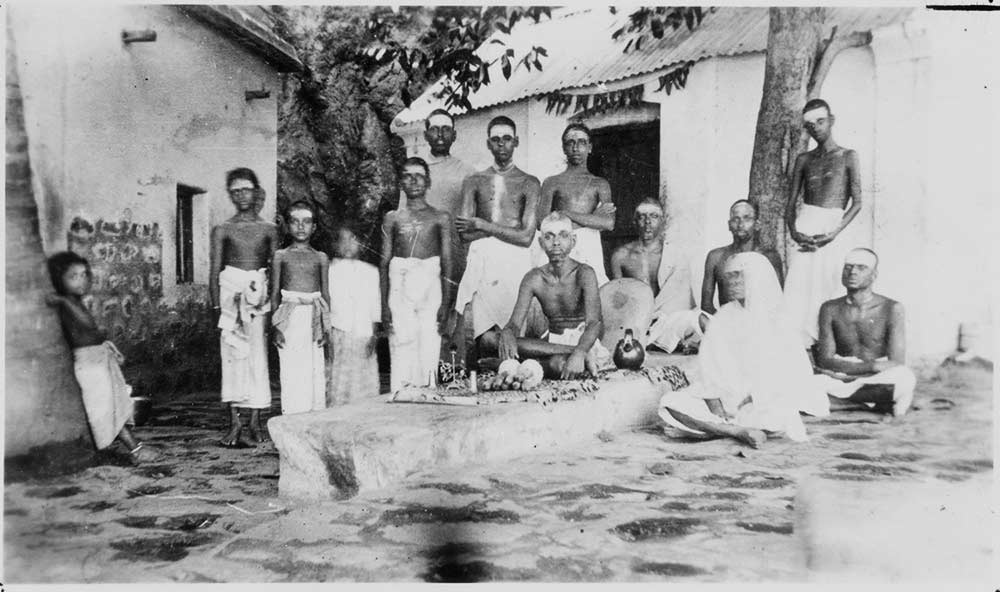
His story with Arunachala begins after he has had a deep mystical experience revealing to him the deep purpose of life. Then, Ramana Maharshi went to Tiruvannamalai where he remained in a state of meditation for more than 2 years. He retired to a sacred cave on Arunachala hill (which can still be visited) and found his Ashram at the foot of it. He lived there until his death in 1950.
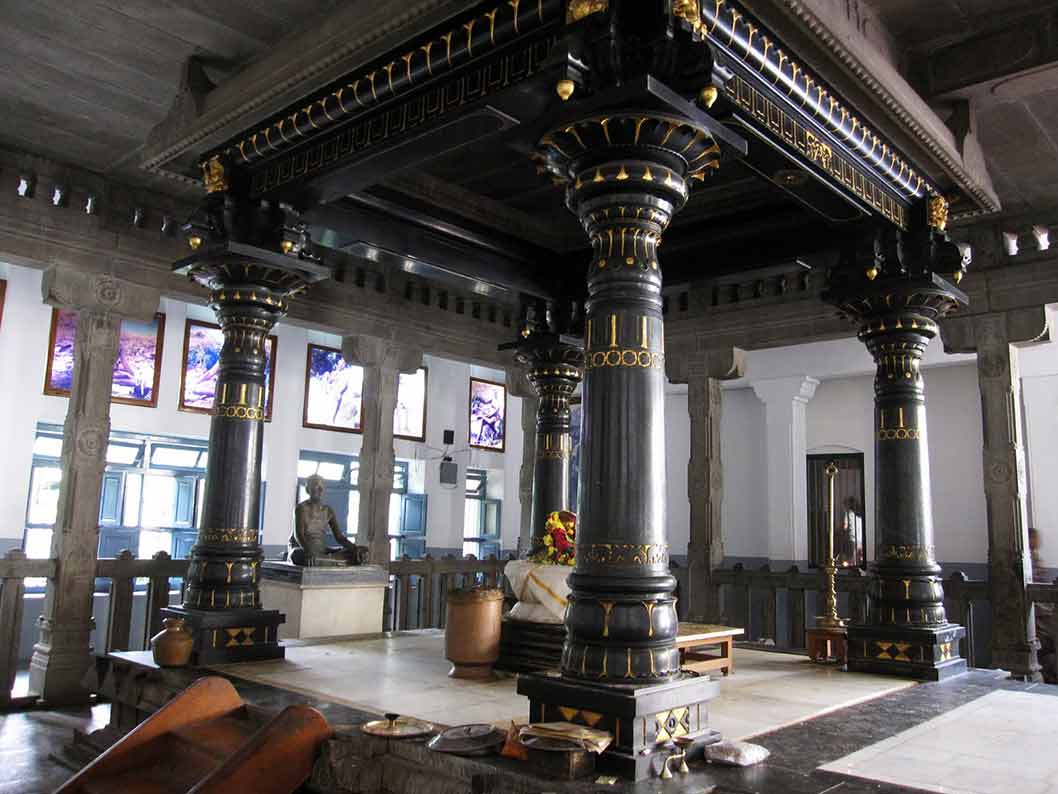
If you wish to make a spiritual retreat, you can stay at the Ashram in a basic room. This requires you to inform the Ashram management well in advance.
Yogi Ramsuratkumar Ashram
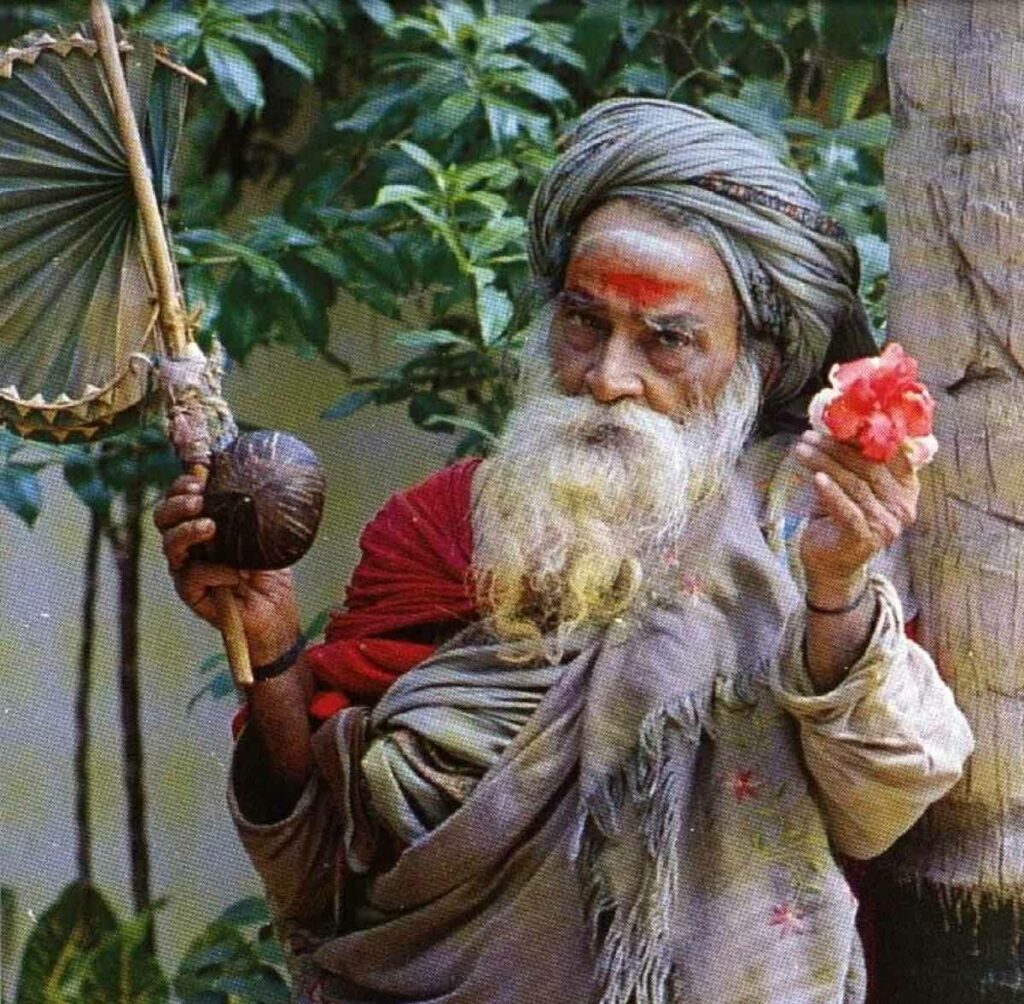
Yogi Ramsuratkumar ashram is another important sacred place to visit in Tiruvannamalai. Born in 1918 on the banks of the Ganges, Yogi Ramsuratkumar, abandoned his family life from an early age to devote himself to spirituality.
An incident led him to investigate the cause of life and death. In 1947 and 1948, he went to the Sri Aurobindo Ashram, in Pondicherry, and to that of Ramana Maharshi but it is at the Papa Ramdas Ashram, in Kanhangad, that he will be initiated into the mantra ‘Om Sri Ram Jai Ram Jai Jai Ram ‘. As he repeated this mantra, it is said to have merged with the ‘Brahman’, the primordial existence.
yogiramsuratkumarashram.org/home
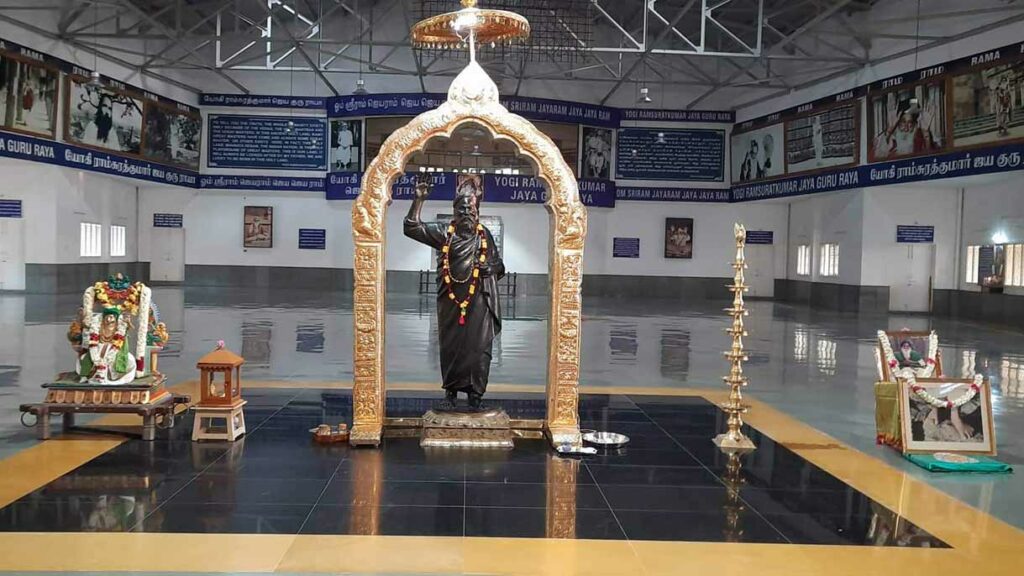
Coimbatore (Kovai in Tamul) is the second largest city in Tamil Nadu and a major business centre. It has been called the “Manchester of the South” because of its textiles industry. Its main assets are its position close to Kerala and the hill stations of Nilgiri mountains. Aficionados of Hindu temples won’t be disappointed either.
Marudhamalai Temple (15km)
Marudhamalai is one of the must-go places for visitors to Coimbatore, not only for its temple to the Hindu god Muruga but also for its luxuriant vegetation and sweeping view of the city.

Marudhamalai temple is named after the hill on which it stands: Marudha Malai, which means “hill of vegetation” or “medicine hill”. Many medicinal herbs used in Ayurvedic medicine grow there.
Marudhamalai temple is very important for worshippers of Muruga. In order of importance it ranks just below the Arupadai Veedu, the six most sacred Muruga temples. Some people even say Marudhamalai is the seventh Arupadai Veedu.
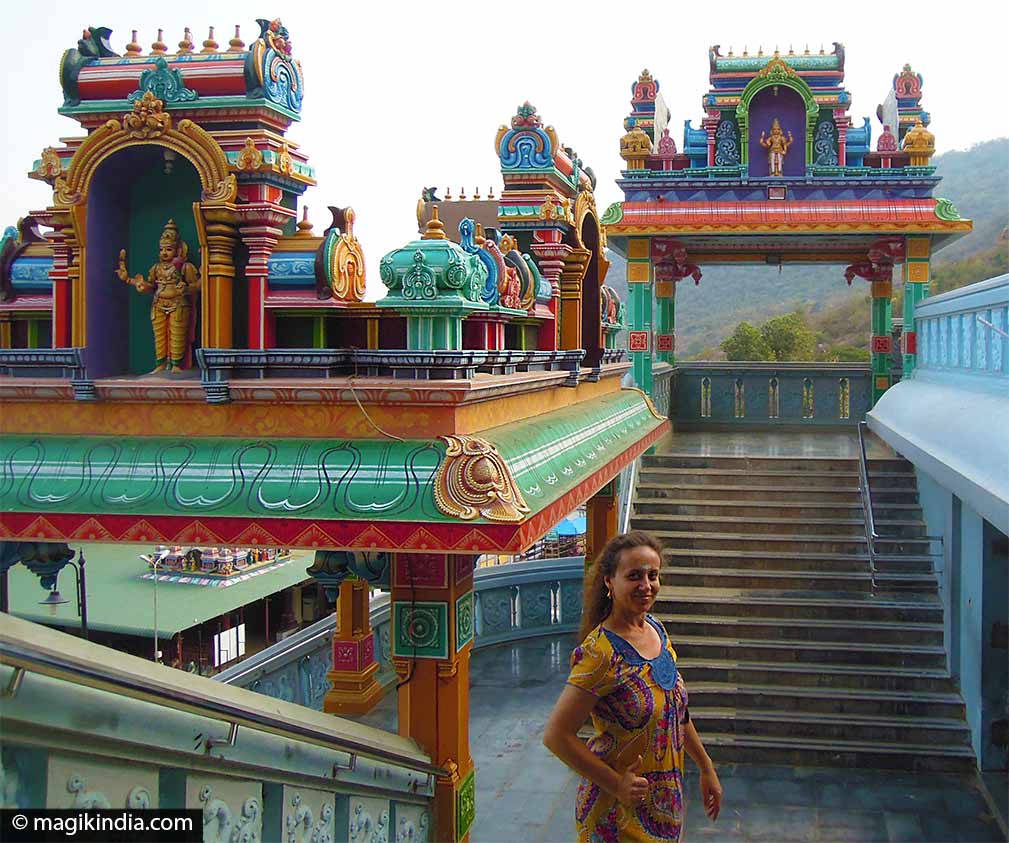
From inscriptions found on the site, the temple is thought to be 1200 years old. It has recently been renovated and new parts added. The idol in the temple represents a particular form of Muruga called Dhandayudhapani. He is said to alleviate physical and mental afflictions.
The temple can be reached in pilgrim mode by climbing the hundreds of steps up the hill, with small temples to stop at along the way – or you can go up by car or bus.
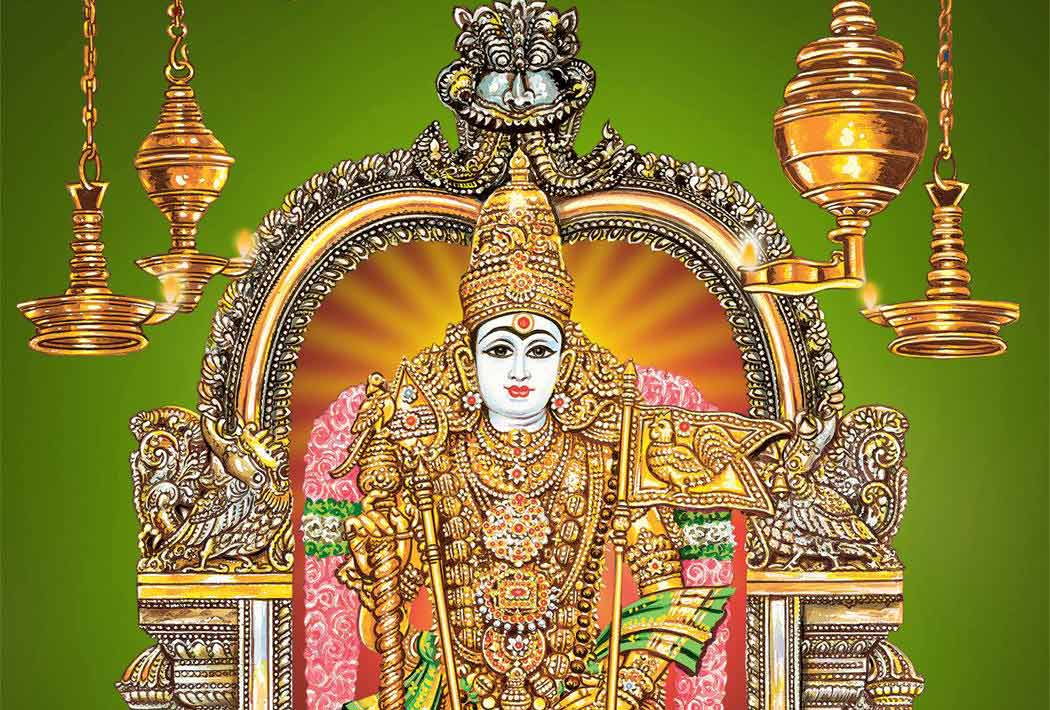
I recommend being there for the “milk abishekam“. This ritual involves pouring litres of milk on the statue to the sound of chants and mantras, in an atmosphere dense with the smoke of sambrani (incense). It is a powerful, entrancing experience.
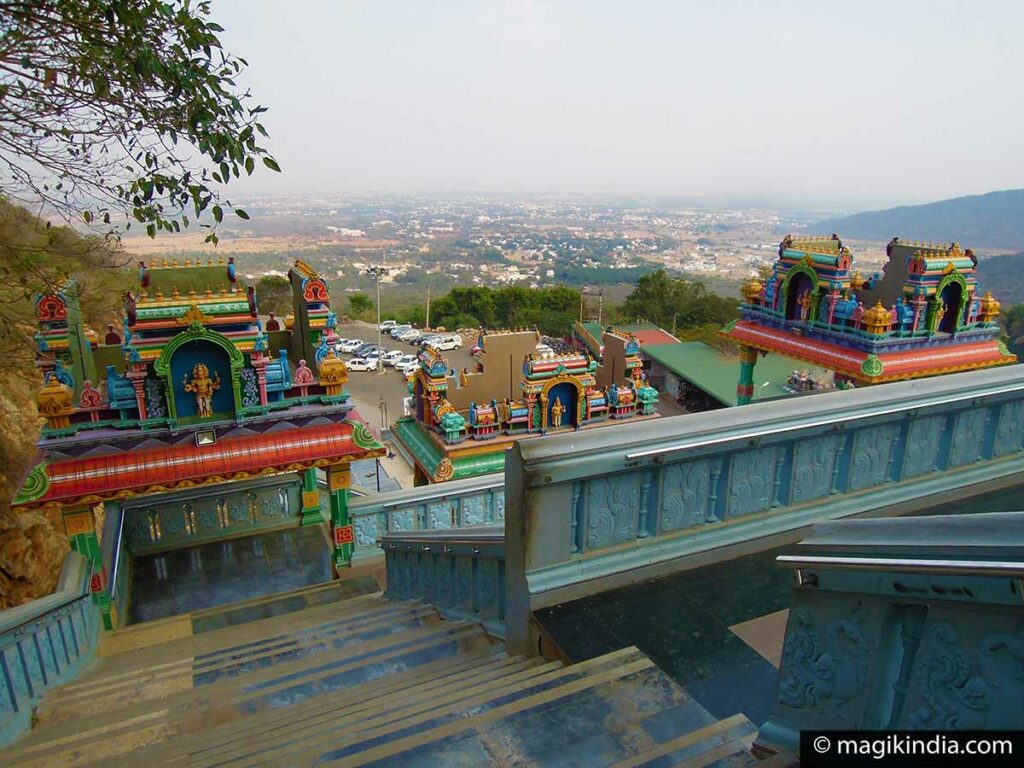
Coimbatore Perur Patteeswarar Temple
Perur Patteeswarar is one of the oldest Hindu temples in Coimbatore. It is more than a thousand years old.
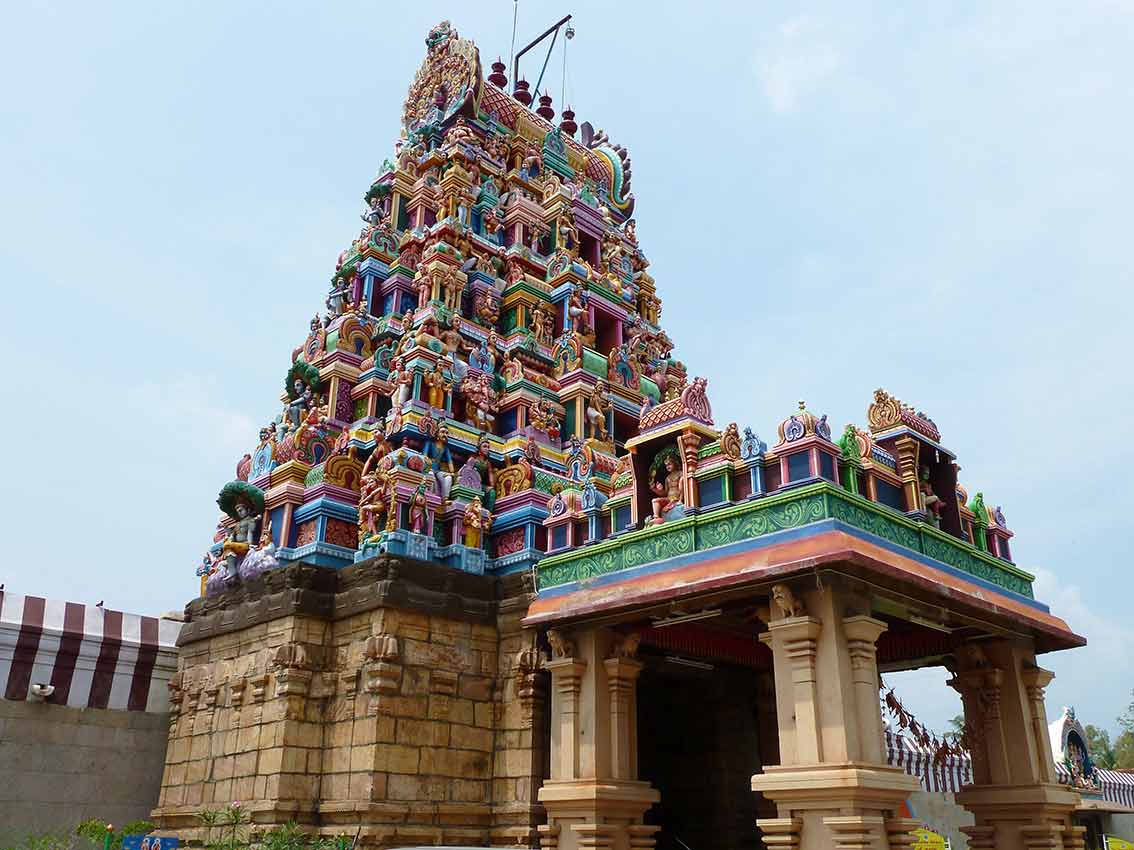
King Karikala Chola is said to have built the first sanctuary here; later, the Kings Hoysala and Vijayanagar both enlarged it. It is dedicated to Shiva under the name of Patteeswarar, represented in the form of a Swayambu Lingam (self-manifested lingam).
Shiva presides with his consort Pachainayaki (Parvati). The temple boasts a unique collection of stone sculptures of deities, protected by rather ugly grilles.
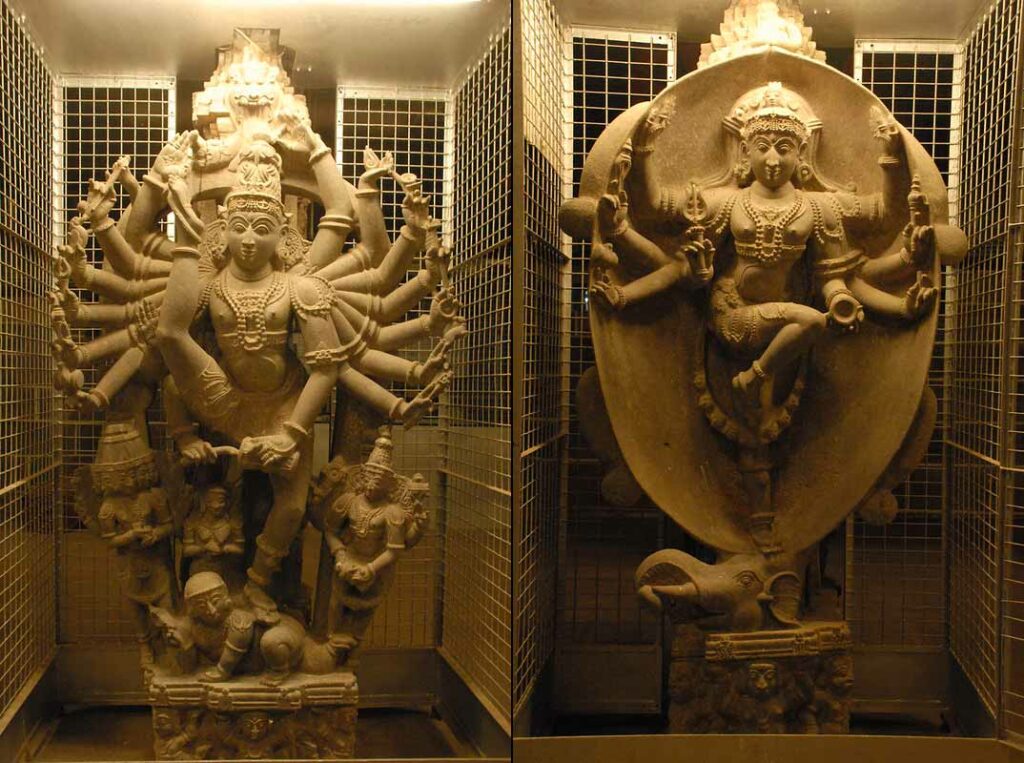
Eachanari Vinayagar Temple (10km)

The main statue in this temple is a black Ganesha almost 2m tall.
It was originally supposed to be installed in Patteswarar temple in Perur, but the axel of the cart taking it from Madurai to Perur broke and the statue stayed here.
Here Ganesha is worshipped as god of all the universe, creator of the Vedas and flame of wisdom.
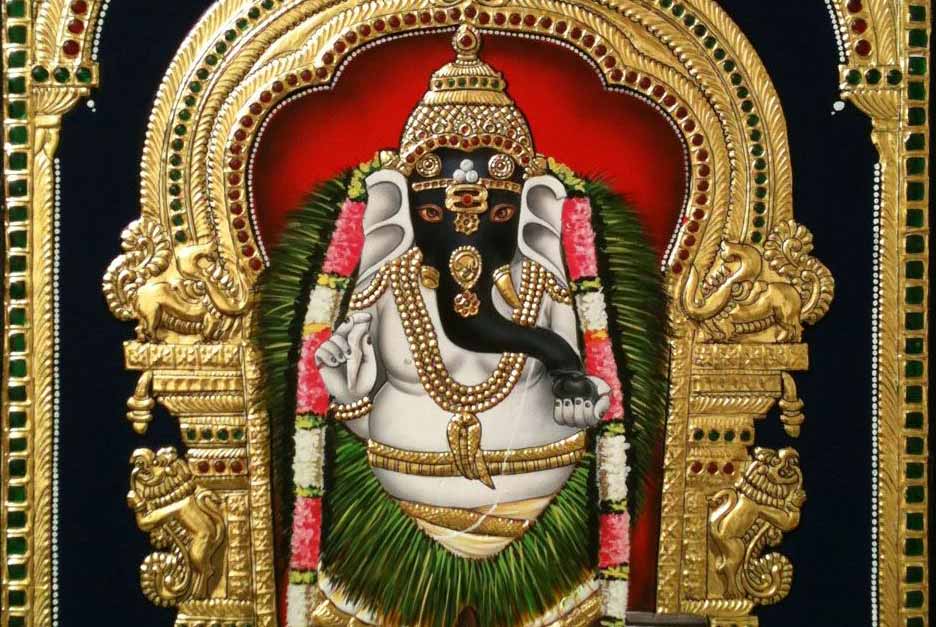
Thirumoorthy Hills (85km from Coimbatore)

The Thirumoorthy hills are a great place to stop on the way between Palani and Coimbatore. But it’s best to visit when there is water – after the monsoon, in other words.
Thirumoorthy dam

Thirumoorthy dham is located at the foot of the Thirumoorthy hills. There is nothing special about the dam itself, but the landscape is beautiful and you can hire a boat to go out on the lake.
Arulmigu Amanalingeswara Temple
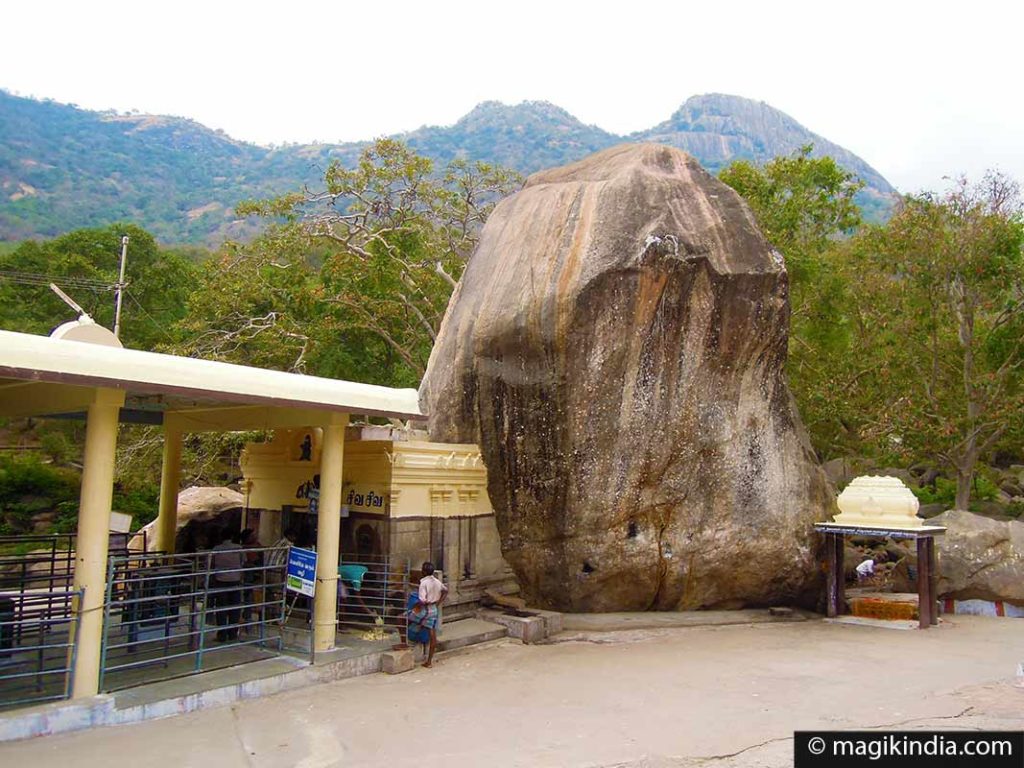
Arulmigu Amanalingeswara Temple commonly called Thirumoorthy Temple, it stands at the foot of Thirumoorthy next to the dam of that name. It has been excavated from the rock and has idols of the Trimurti (Brahma, Vishnu and Shiva) in the same sanctuary. A stream flows close by.
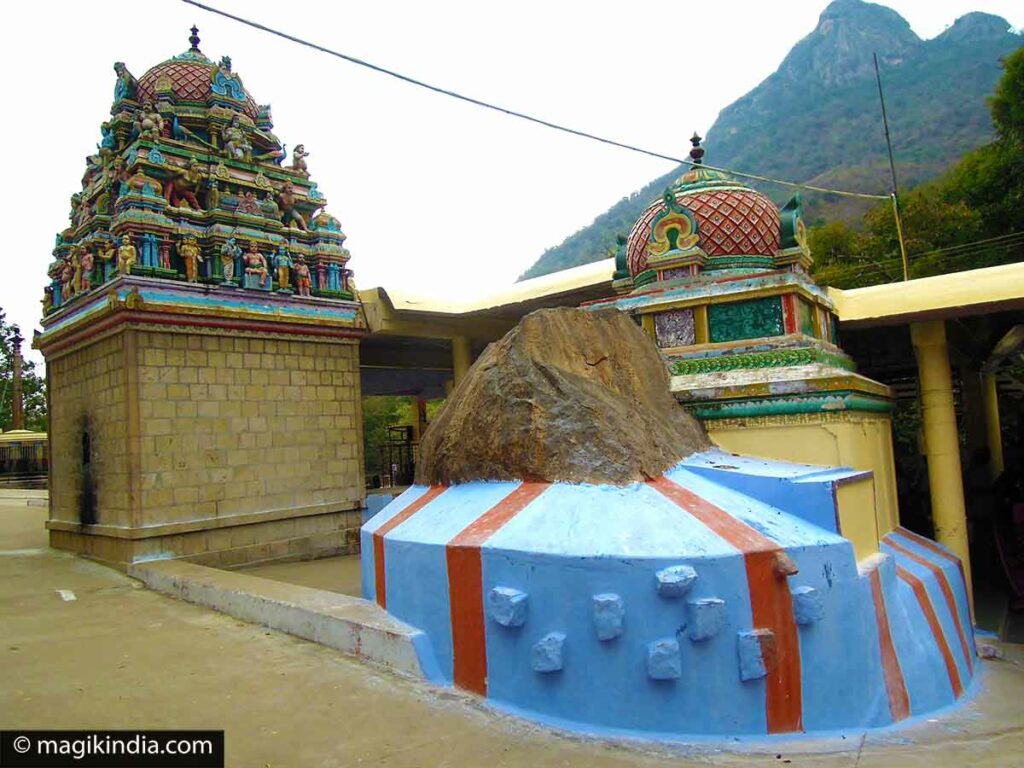
Panchalingam falls

A path to the left of the temple takes you on a pleasant walk along the river for 2km, arriving at the Panchalingam falls. Your efforts are amply rewarded by a cool bath – especially appreciated in summer.
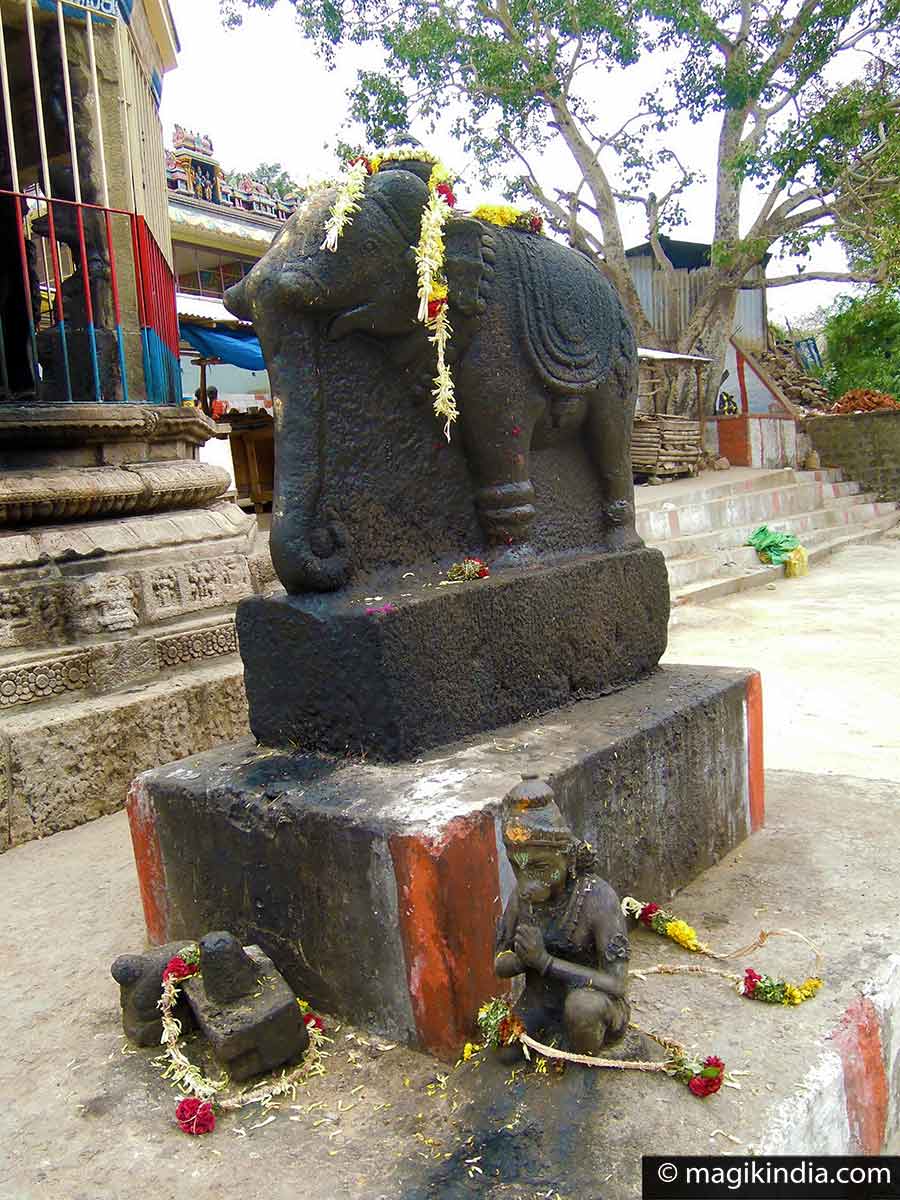
Originally there were five lingams (emblems of Shiva) here, but some have been carried away by the river after heavy rains. At religious festivals pilgrims take water from the falls to use in their rituals and prayers.
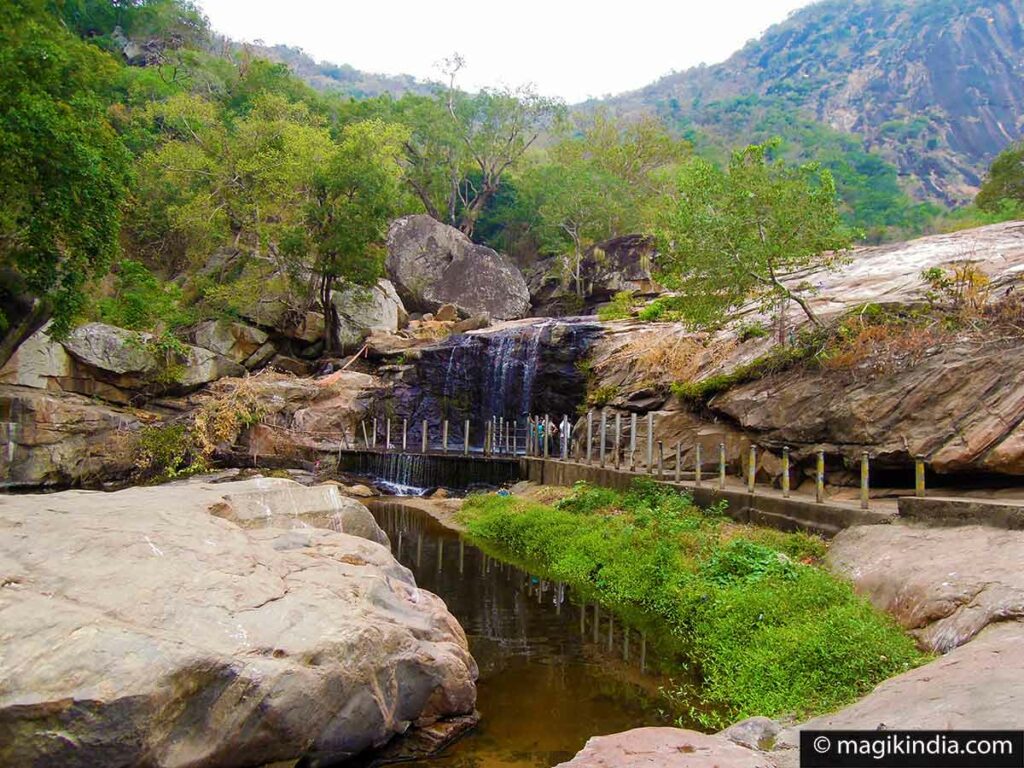
Ooty – Nilgiris Hills (85km)
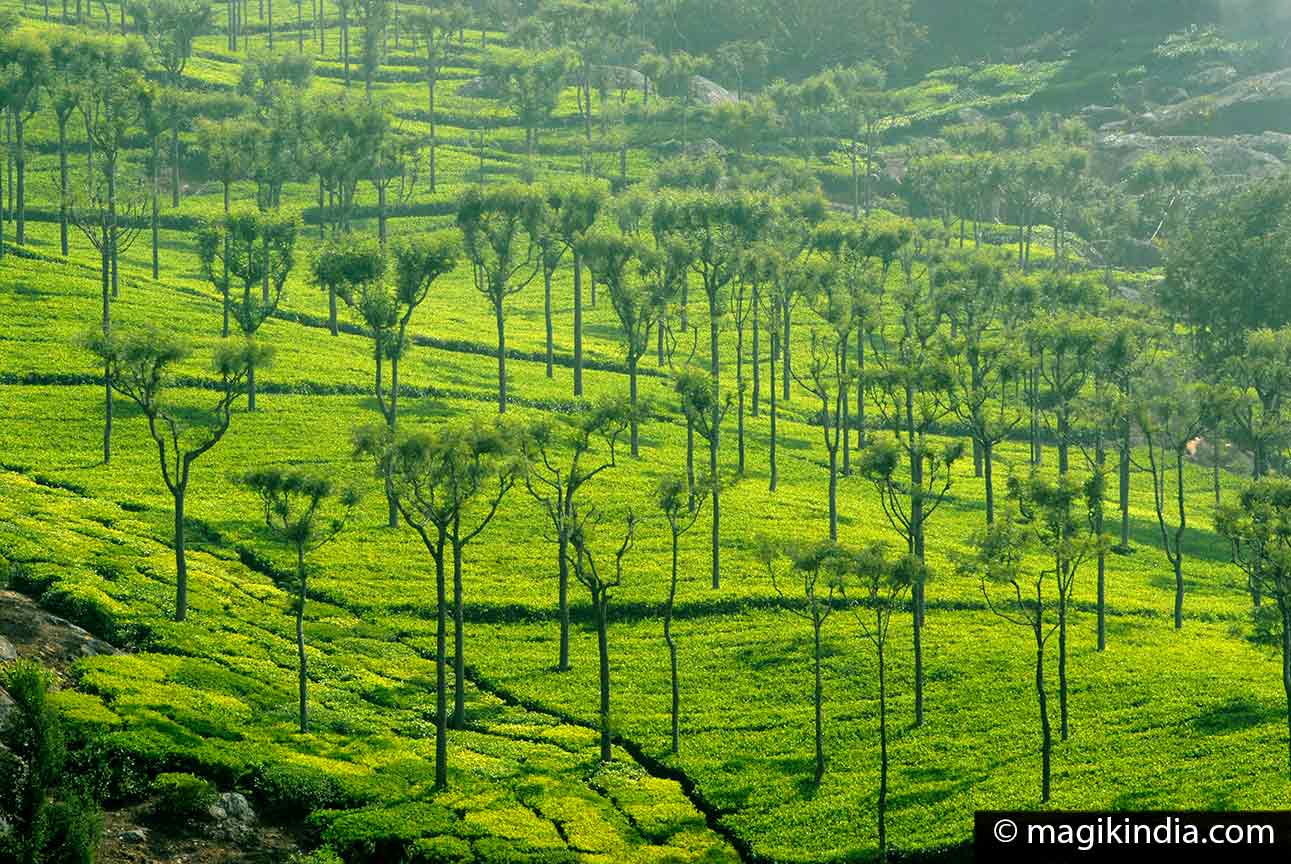
Udhagamandalam, 80km north of Coimbatore, is better known by its English abbreviation: Ooty. It is a hill station 2500m above sea level. Its cool climate, famous tea gardens and dense forests fragrant with eucalyptus make it one of the most popular hill stations in the Nilgiri mountains…
KNOW MORE ABOUT ITPalani hill (110km)
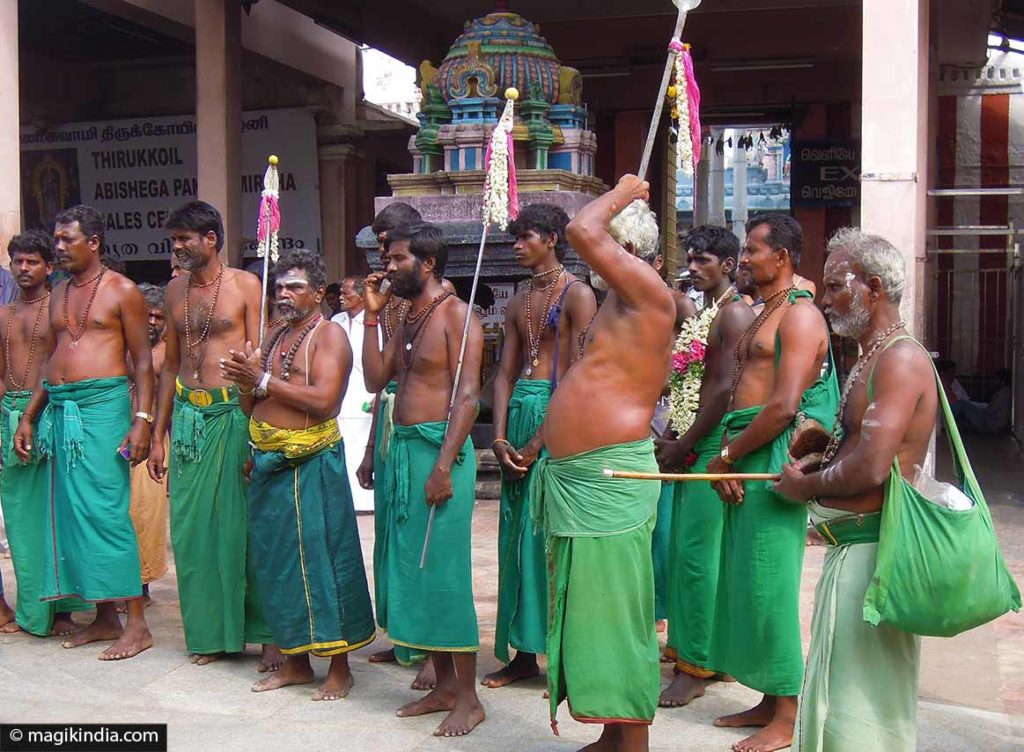
Palani temple is one of the most important temples to the Hindu god Muruga or Kartik, being the third of his Six Holy Abodes (aarupadai veedu)…
Tirupati, in Andra Pradesh, is visited by nearly 40 million pilgrims per year making it one of the highest places of pilgrimage in India. This city is famous for the Venkateswara Swami temple dedicated to the Hindu deity Vishnu, commonly called Balaji. According to legend, Tirupati is the ‘Bhuloka Vaikuntam’, that is to say the abode of Lord Vishnu on earth.
![]() Although few foreign tourists come here, this peaceful village on the banks of the River Pampa is an important place of pilgrimage for Hindus and is famous for its Krishna temple and the “snake-boat” race held every year during the Onam festival. Aranmula also has another unique claim to fame: sacred mirrors called kannadi are made there using a centuries-old technique whose secret is closely guarded.
Although few foreign tourists come here, this peaceful village on the banks of the River Pampa is an important place of pilgrimage for Hindus and is famous for its Krishna temple and the “snake-boat” race held every year during the Onam festival. Aranmula also has another unique claim to fame: sacred mirrors called kannadi are made there using a centuries-old technique whose secret is closely guarded.
Aranmula Parthasarathy Temple
The Parthasarathy temple, built in typical Keralan pagoda style, is one of the 108 revered Vishnuite divya desam temples and also one of Kerala’s Pancha Pandava temples. According to Hindu legend, these temples were each built by one of the five Pandava brothers.
The legend goes that after King Parikshit was crowned the Pandava brothers set off on a pilgrimage. They visited Kerala and each built a temple there. Yudishthira built one at Thrichittatt, Bhima at Puliyur, Arjuna at Aranmula, Nakula at Thiruvanvandoor and Sahadeva at Thrikodithanam.
It is said that Arjuna built the Parthasarathy temple at Nilakkal near Sabarimala, to atone for a sin. But Nilakkal was in dense forest, making it difficult to perform daily rituals there. The idol was therefore brought to Aranmula on a raft made of six bamboo poles – whence the name Aranmula, which means “six bamboo stems”.
Several “snake boats” or chundan vallams accompanied the procession across the River Pampa. The idol was installed in the temple on the day of Uthrattathi in the month of Chingam (August-September) according to the Malayalam calendar, Uthrattathi being Arjuna’s birthday. The village of Aranmula celebrates this event each year with a snake-boat regatta during the Onam festival.
The main idol in the temple is a statue of Lord Krishna as Parthasarathy, i.e. in his role as the charioteer who drove Arjuna into battle in the Kurukshetra war, as described in the Mahabharata epic.
Vallamkali, Snake-boat race
The Aranmula Uthrattathi Vallamkali or snake-boat race is one of the year’s biggest festivities in the village of Aranmula and one of the oldest traditional races in Kerala.
It is linked to the Parthasarathy temple and takes place every year on Uthrattathy day in the month of Chingam in the Malayalam calendar (August-September), four days after Thiruvonam (the Onam festival).
People of all social classes and religions living in and around Aranmula get involved in the Vallamkali. It is organised by the Seva Sangam Palliyoda, an organisation made up of two members from each of the 48 villages or karas that possess a snake-boat.
=> READ MORE ABOUT THE SNAKE-BOAT RACE !
[ Watch my video of Aranmula race 2015 ]
Aranmula’s sacred kannadi mirrors
The precious and mysterious kannadis of Aranmula are metal mirrors of a unique kind. They are made only in this village and are exported throughout the world.
The story goes that a few generations ago, eight families from Tirunelveli who specialised in temple art came to Aranmula at King Pandalam’s command to work on the building of the Parthasarathy Temple.
While working on the temple idol’s bronze crown the craftsmen discovered the exceptional reflective qualities of a particular alloy of tin and copper. But they were unable to reproduce the alloy until Parvathi Amma, a widow in their community, received the exact composition of the alloy in a dream. That composition is kept secret to this day by the few artisan families still transmitting the craft from generation to generation.
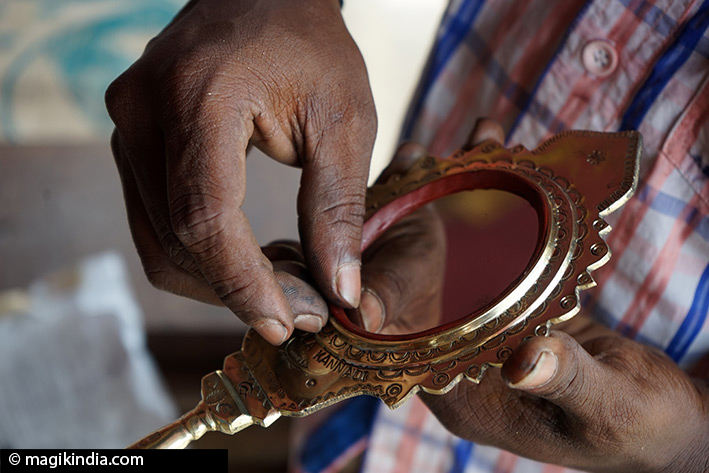
Most mirrors consist of a sheet of glass with a silver or aluminium backing which reflects objects through the glass.
If you place a finger on an ordinary mirror, you will see a gap between the finger and its reflection. But if you place your finger on a kannadi mirror, there is no gap: the finger and its reflection meet, because there is no glass in between.
The kannadi of Aranmula have a distinct old-world charm. They are generally round or oval hand mirrors set in brass frames. These are stamped, as the mirrors are protected by an official Geographical Indication. They count among the eight auspicious objects or ashtamangalyam in a Kerala bride’s trousseau.




